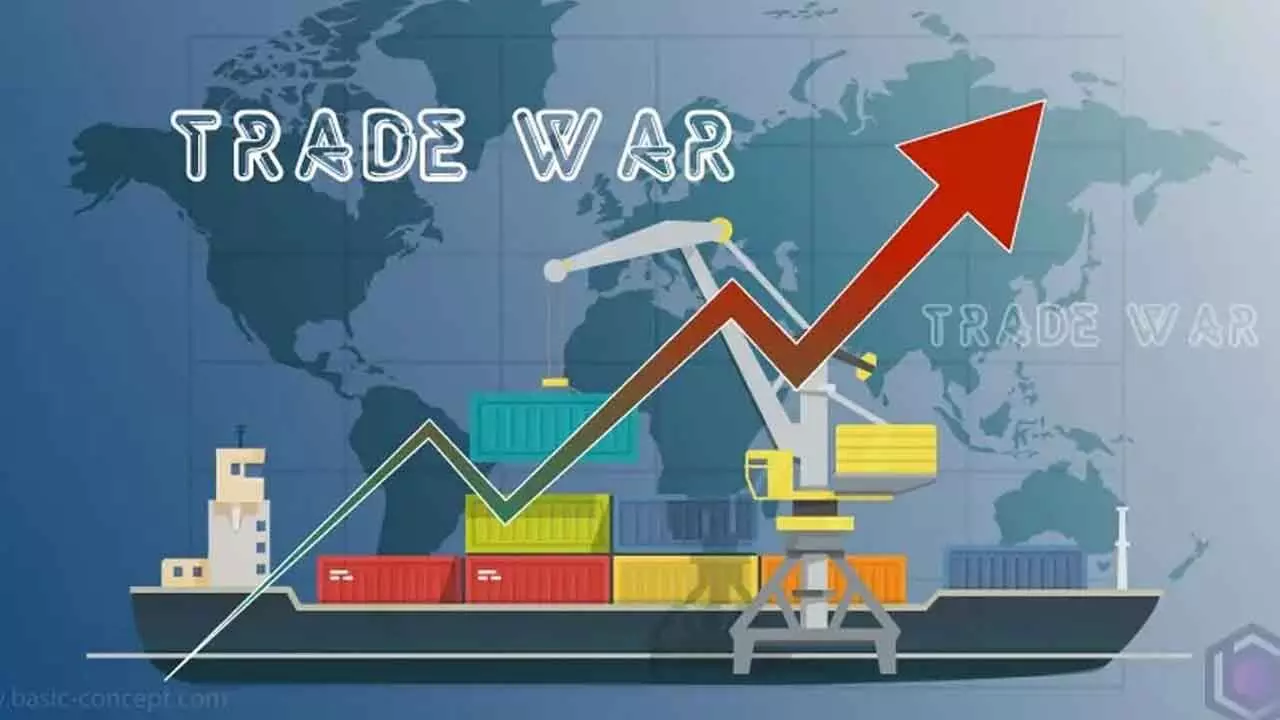India Must Strive To Make Meaningful Gains From The Global Tariff War
India Must Strive To Make Meaningful Gains From The Global Tariff War

As April 2 draws near, the noise around implementation of tariffs by the Trump administration is likely to get louder and shriller. On that count, India will need to strive harder to see the light at the end of the tunnel from a global tariff war perspective considering that it is likely to lose up to $six billion, or 0.16 per cent of its GDP, in exports to the US, as it could touch $31 bn at 25 per cent tariff. While the nature of reciprocal tariff implementation is unclear, experts believe a broad country-level tariff by the US is the most likely scenario, given complications around sector/commodity-level tariffs. While India could be among the worst hit nations as per broad reciprocal differentials, analysts establish that key susceptible sectors like auto, pharma and electronics are far better placed than feared, whereas apparel and gems/jewellery were most exposed. Besides, there are a few ‘easy wins’ to offer in exchange for tariff mitigation elsewhere in myriad forms like higher energy and defence imports and lower foreign EV tariffs.
Having progressed marginally in high-skill product value chains, India has captured only a small share of the low-skill pie that China vacated post-Covid. Tariffs on Mexico and Canada offer some potential opportunities, but gains will take time to accrue, given the highly integrated North American supply chains. With reciprocal tariffs looming, there are three ways, as per Emkay, in which these could be imposed. The first one is about broad country-level tariffs, which should be relatively simple but most likely, most damaging. Secondly, sector-level tariffs that are more complex, less likely and relatively less harmful. Finally, commodity/sub-sector level tariffs, which might be the most complex, thus least likely though they come with varied sectoral impact. Look at the relative tariff differentials and the importance of the US for Indian sector exports to identify auto, gems/jewellery, apparel, pharma, electronics, and seafood as the most vulnerable sectors/commodity groups to reciprocal tariffs. However, most of these sectors have nuances that make the threat less than feared.
Given Trump’s love for a deal, New Delhi should pursue negotiations with the US by offering concessions in some key sectors, which would not hurt domestic industry, but are important politically/economically for Trump, in exchange for tariff mitigation elsewhere. It can be possible by increasing energy imports, defence purchases and cooperation from the US and reducing tariffs on certain agri/food commodities and foreign EVs. The broader US tariff war has aims beyond trade policy with China being the most targetted. Despite tariffs on Mexico and Canada, a thorough assessment suggests that India’s opportunity from this war is limited. It has not gained global market share in the low-skill areas that China has vacated post-Covid, and China exports relatively more complex products than India, leaving limited opportunities for the latter. As regards some export opportunities in Mexico and Canada, the onus will be on handling the nature of North American supply chains.

